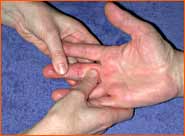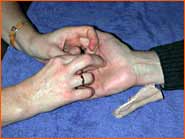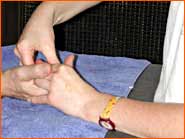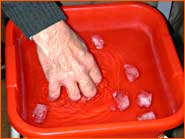



 |
||||||
   |
||||||
| Physical Therapy Disease and injury of the hand as well as the resulting surgical treatment can often lead to pain and immobilization that causes functional limitations. The duration of immobilization should be minimized to only the amount of time considered essential so that movement is not unnecessarily restricted. Physical and occupational therapy are used to support the continued treatment of the patients. As soon as it is clear that a patient cannot obtain normal function of the hand on his own accord, the prescription of physical and occupational therapy is absolutely necessary! In the case of many diseases, injuries or surgeries of the hand, it is anticipated that physical and occupational therapy will be required. Since the goal is to achieve the least possible limitation of function, the prescription is issued early on. Physical and occupational therapy have also shown their worth in preparation before hand surgery. For example, surgery involving the freeing of flexor tendons can only be successfully carried out when preoperative physical and occupational therapy is able to achieve full mobility of the hand or finger in question. In general, the prescription of physical and occupational therapy should follow these guidelines:
|
||||
| Home | About Dr. Lowka | Advanced Education/Publications | The Hand Hand Surgery Diagnosis and Operations | Clinical Pictures in Hand Surgery | Areas of Emphasis in Hand Surgery Post-operative Treatment | Center for Diagnosis and Out-patient Surgery Contact Us | Legal Information |
||||